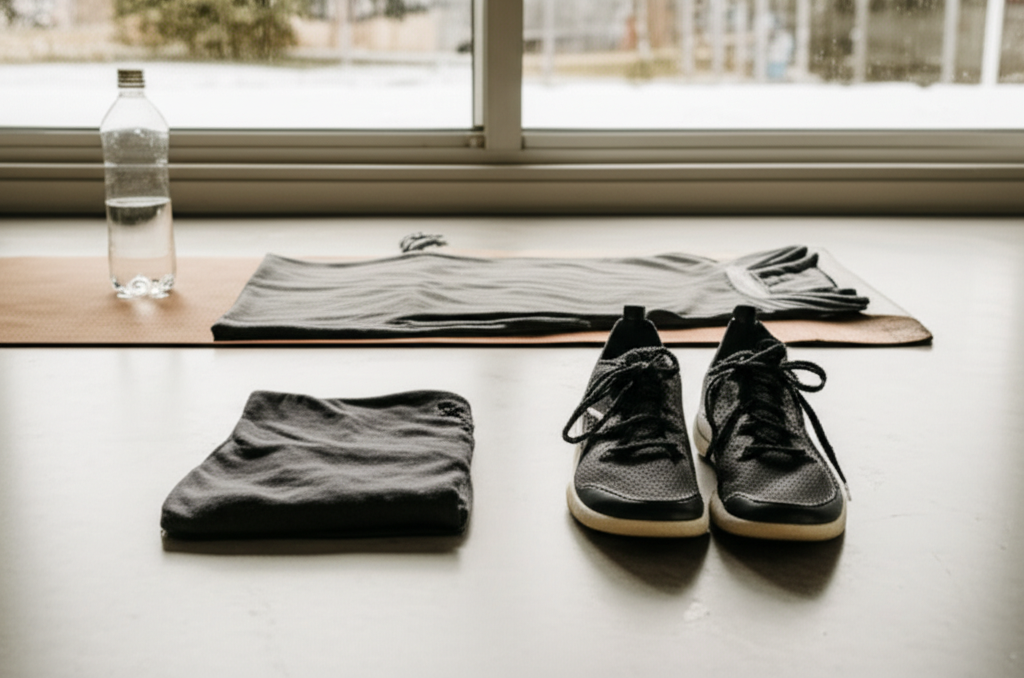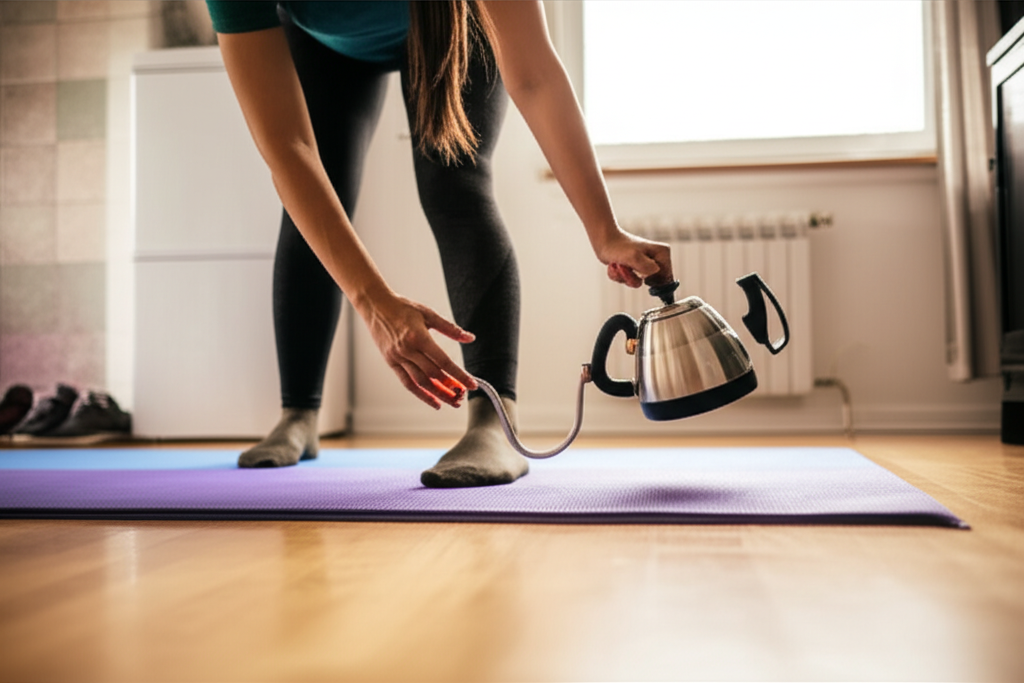Embarking on a fitness journey can feel daunting, with countless workout plans and conflicting advice leaving many unsure where to begin. The real challenge, however, often isn’t just starting, but consistently showing up and making exercise a sustainable part of your life. By adopting a smart, step-by-step approach and integrating fitness into your lifestyle, you can build a routine that not only delivers results but also becomes a habit you genuinely enjoy.

Why Start a Workout Routine? Unlocking the Benefits of Regular Physical Activity
Regular physical activity offers a profound array of benefits that extend far beyond aesthetics, enhancing both physical and mental well-being. Understanding these advantages can be a powerful motivator to begin and maintain your routine.
Firstly, exercise is a critical tool for weight management, helping to prevent excess weight gain and aiding in weight loss by burning calories. Beyond weight, it significantly combats various health conditions and diseases. Consistent activity boosts “good” cholesterol (HDL) and lowers unhealthy triglycerides, promoting smoother blood flow and reducing the risk of cardiovascular diseases like heart disease and stroke. It also plays a vital role in preventing or managing metabolic syndrome, high blood pressure, type 2 diabetes, and certain cancers.
Moreover, physical activity is a potent mood enhancer. A brisk walk or gym session can stimulate brain chemicals that leave you feeling happier, more relaxed, and less anxious, while also boosting confidence and self-esteem. Regular exercise also boosts energy levels and endurance, making daily tasks feel less exhausting as your heart and lung health improve. It helps strengthen your bones and muscles, which is crucial for maintaining mobility and preventing bone density loss as you age. Improved sleep quality is another significant benefit, with exercise reducing anxiety and depression that can interfere with rest. Finally, staying active can sharpen your thinking, learning, and judgment skills and may even increase your chances of living longer.

Before You Begin: Essential Preparations for Your Fitness Journey
Laying a solid foundation is crucial for a successful and sustainable workout routine. This involves both medical clearance and strategic goal setting.
Consult Your Doctor
Before embarking on any new exercise program, especially if you have been inactive for a long time, are managing a health condition, or take medications, it is paramount to consult your doctor. A medical professional can assess your unique health profile, identify potential risks such as cardiovascular problems or musculoskeletal issues, and advise on appropriate activity levels and types of exercise. This ensures your plan is safe and tailored to your specific needs, helping to avoid complications or injuries.
Set SMART Fitness Goals
Vague goals like “get in shape” often lead to frustration. Instead, adopt the SMART framework for goal setting: Specific, Measurable, Attainable, Relevant, and Time-bound.
- Specific: Clearly define what you want to achieve. Instead of “lose weight,” aim for “lose 10 pounds.”
- Measurable: Establish metrics to track your progress, such as logging your workouts, weight, or repetitions.
- Attainable: Set challenging but realistic goals. If you can walk 2 km, aim for 3 km before progressing to 5 km.
- Relevant: Ensure your goals align with your overall well-being and personal interests.
- Time-bound: Set a clear timeline, like “complete a half-marathon in six months.”
It’s also essential to start small and realistic. Accomplishing small, incremental goals early on can provide significant motivation to keep going.

Building Your Routine: Starting Strong and Smart
With your foundational preparations in place, it’s time to build a workout routine that suits you.
Start Slow and Gradually Increase Intensity (Progressive Overload)
One of the most common pitfalls for beginners is doing too much, too soon. This can lead to injury and burnout. The key is gradual progression, also known as progressive overload, where you slowly increase the demands on your body as it adapts.
Begin with short, moderate sessions, such as brisk walking, light biking, or bodyweight circuits. Over time, you can gradually increase the duration of your workouts before increasing their intensity. For strength training, this means slowly increasing the weight, number of repetitions, or sets as exercises become easier. For cardiovascular exercise, you can gradually extend the length of your sessions or increase your speed.
Find Activities You Enjoy
You are far more likely to stick with an exercise routine if you genuinely enjoy the activities. Explore different options like hiking, dancing, swimming, cycling, team sports, or group classes. If you dislike running, don’t force it. There’s a wide world of physical activity to discover.
Vary Your Workouts (Mix It Up)
Incorporating variety into your routine helps prevent boredom and reduces the risk of overuse injuries by engaging different muscle groups. Mix cardio with strength training, and consider flexibility exercises like yoga or Pilates. Changing activities, locations, or even the time of day can keep things fresh and challenging.
Warm-up and Cool-down
Never skip your warm-up and cool-down. A warm-up, consisting of dynamic stretching and light cardio, prepares your muscles and gets your blood flowing, reducing injury risk. A cool-down, with a few minutes of walking and static stretching, helps your heart rate return to normal and prevents muscle stiffness.

Fueling Your Body: Nutrition and Hydration for Optimal Performance
What you consume before, during, and after your workouts significantly impacts your energy levels, performance, and recovery.
Pre-Workout Nutrition
To maximize your workout, focus on carbohydrates for energy and a moderate amount of protein.
- 1-3 hours before: A small meal with easily digestible carbs and protein, such as oatmeal with a banana or Greek yogurt with berries.
- 30-60 minutes before: A small, carb-rich snack like an energy bar, a banana, or a handful of raisins can provide a quick energy boost and prevent hunger. Avoid high-fat and high-fiber foods close to your workout, as they can cause digestive discomfort.
During-Workout Hydration
Staying hydrated throughout your workout is crucial for maintaining performance and preventing issues like headaches, cramping, and heat stroke.
- For most workouts: Water is sufficient.
- For strenuous training or exercise longer than an hour: Sports drinks containing carbohydrates and electrolytes (minerals like sodium and potassium) can be beneficial to replenish lost fluids, fuel, and electrolytes.
- General rule: Aim to drink small amounts of fluid at regular intervals during exercise, typically 4-8 ounces every 15-20 minutes.
Post-Workout Nutrition
Refueling after exercise is vital for muscle repair and recovery, as well as replenishing glycogen stores. Aim for a meal or snack containing both carbohydrates and protein within two hours of your workout. Good options include yogurt and fruit, a peanut butter sandwich, low-fat chocolate milk, or turkey on whole-grain bread.
Overall Hydration
Beyond workout times, drink water consistently throughout the day. Check your urine color; if it’s darker than pale straw, you’re likely dehydrated.

Listening to Your Body: A Key to Sustainable Fitness
Understanding and responding to your body’s signals is paramount for a long-term, injury-free fitness journey. “Listening to your body” means developing awareness and making smart training and recovery choices.
- Recognize signals: Pay attention to fatigue, persistent soreness, sharp pain, or unusual discomfort.
- Distinguish discomfort from pain: Exercise isn’t always comfortable, but sharp or increasing pain is a red flag that you should stop or modify the activity.
- Know when to rest: Rest days are not a sign of weakness; they are essential for muscle repair and growth. If you’re overly fatigued or experiencing persistent soreness that doesn’t improve, it’s time to scale back or take a break.
- Personalize your training: Don’t force activities you dislike or push through pain just because others are. Find what feels best for you.

Making Exercise a Habit: Strategies for Long-Term Adherence
Consistency is the cornerstone of any successful workout routine. Here’s how to integrate exercise into your life so it becomes an automatic habit.
Schedule It Like an Appointment
Treat your workouts as non-negotiable appointments in your calendar. Blocking out specific times for physical activity—whether it’s a morning walk or an evening gym session—creates both mental and physical associations with the activity, gradually reducing resistance. Set reminders to ensure you show up for yourself.
Consistency Over Intensity (Initially)
In the beginning, simply showing up is more important than the intensity or duration of your workout. Focus on building the habit of regular movement. Even short, manageable sessions contribute to consistency and can be gradually increased over time.
Find an Accountability Partner
Working out with a friend, family member, or joining a group class can provide valuable support and motivation. An accountability partner makes you more likely to show up and stick to your commitments.
Reward Yourself
Establish a reward system for achieving milestones, no matter how small. This positive reinforcement can significantly boost motivation. Treat yourself to a massage, new workout gear, or an enjoyable activity when you reach a goal.
Eliminate Obstacles
Identify potential barriers to your workouts and proactively address them. Lay out your workout clothes the night before, keep equipment easily accessible, or combine exercise with an existing daily activity, like walking the dog after breakfast. Making exercise convenient reduces the friction of getting started.
Forgive Slip-Ups
Life happens, and you will inevitably miss a workout or two. Don’t let a missed session derail your entire routine. Forgive yourself, acknowledge the slip-up, and get back on track with your next planned workout. Consistency over time is more impactful than perfection every single day.

Overcoming Plateaus and Staying Motivated
Even with the best intentions, you might experience plateaus where progress seems to stall, or motivation wanes. This is a normal part of the fitness journey.
Adjust Your Routine
When your body adapts to a particular workout, results can slow down. One of the most effective ways to break through a plateau is to change your exercise routine. This could involve:
- Switching exercises: Replace familiar movements with different ones that target the same muscle groups.
- Varying intensity and duration: If you typically do short, high-intensity workouts, try longer, lower-intensity sessions, or vice-versa.
- Adjusting training variables: Modify the number of sets, repetitions, or rest times to challenge your muscles in new ways.
- Incorporating new types of training: Add high-intensity interval training (HIIT) or resistance training if you’ve focused primarily on cardio.
Continue Progressive Overload
To keep seeing gains, continue to gradually increase the demand on your muscles. This could mean lifting heavier weights, increasing reps, or running longer distances. Small, consistent increases over time make a big difference.
Reassess Your Goals
Sometimes, a plateau indicates that you’ve outgrown your current goals. Set new, challenging, and inspiring targets to reignite your motivation and push your limits.
Prioritize Rest and Recovery
Adequate rest and recovery are just as crucial as the workouts themselves. Muscles grow and adapt during recovery periods. Ensure you’re taking at least one to two rest days per week and consider active recovery like light stretching or yoga.
Dial in Your Diet and Hydration
Revisit your nutrition and hydration strategies. Ensure you’re fueling your body with a balanced intake of carbohydrates, proteins, and healthy fats, and staying consistently hydrated. Poor nutrition can sabotage even the most diligent workout efforts.
Seek Professional Advice
If you’re struggling to overcome a plateau or stay motivated, consider consulting a certified personal trainer or a fitness professional. They can provide personalized guidance, adjust your program, and help you find new strategies to break through barriers.
By embracing these strategies for starting and sticking with a workout routine, you can build a sustainable fitness lifestyle that brings lasting health, energy, and well-being.







